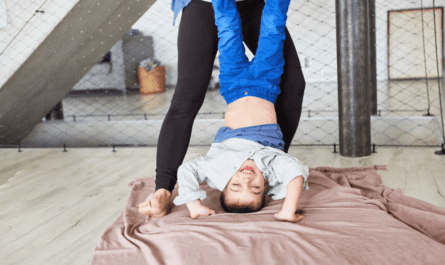Introduction
- Define the health topic: A handstand is a fundamental gymnastics and fitness skill that showcases strength, balance, and body control.
- Explain its relevance and importance: Mastering a handstand improves overall fitness, enhances body awareness, and boosts confidence. It is also a foundational skill for various gymnastics and acrobatic moves.
Benefits of Learning a Handstand
- Physical benefits: Enhances upper body strength, core stability, and balance.
- Mental benefits: Improves focus, body awareness, and confidence.
Safety Precautions
- Importance of safety: Reducing the risk of injuries is crucial.
- Pre-exercise checks: Ensure the practice area is safe, wear appropriate clothing, and warm up properly.
Preparatory Exercises
-
Wrist and Shoulder Mobility Exercises
- Wrist circles
- Shoulder dislocations with a resistance band
-
Core Strengthening Exercises
- Planks
- Hollow body holds
-
Upper Body Strengthening Exercises
- Push-ups
- Pike push-ups
Finding the Right Space
- Indoor vs. outdoor: Pros and cons of each setting.
- Choosing a safe practice area: Ensure there is enough space and a soft surface like a yoga mat.
Basic Handstand Positioning
- Hand placement: Hands shoulder-width apart, fingers spread.
- Body alignment: Keep a straight line from wrists to toes.
- Head position: Look between your hands.
Step-by-Step Guide to a Handstand
-
Starting Position
- Stand with feet together, arms extended overhead.
-
Kicking Up
- Lift one leg and kick the other leg up.
-
Reaching the Handstand
- Engage your core and maintain body alignment.
-
Holding the Position
- Keep your body tight and balanced.
-
Coming Down
- Lower one leg back down and return to the starting position.
Common Mistakes and How to Avoid Them
- Arched back: Keep your core engaged.
- Bent arms: Ensure your arms are fully extended.
- Looking down: Keep your head neutral.
Progressions for Beginners
-
Wall Walks
- Start facing the wall and walk your feet up while walking your hands closer to the wall.
-
Wall Handstands
- Kick up into a handstand with your back facing the wall.
-
Freestanding Handstands with Spotter
- Practice with a friend to assist and correct your form.
Advanced Handstand Techniques
- Handstand push-ups: Increase upper body strength.
- Handstand walking: Improve balance and control.
- Press handstands: Enhance core and shoulder strength.
Cool Down and Stretching
- Importance of cooling down: Prevents muscle soreness and improves flexibility.
- Recommended stretches: Wrist stretches, shoulder stretches, and hamstring stretches.
FAQs
What should I do if I keep falling over?
- Practice near a wall and work on your core strength to improve balance.
How long does it take to learn a handstand?
- It varies depending on individual strength and practice frequency. Consistent practice can yield results in a few weeks to several months.
Can anyone learn to do a handstand?
- Yes, with proper training and dedication, anyone can learn to do a handstand.
Is a handstand dangerous?
- With proper technique and safety precautions, learning a handstand is safe. Always ensure you practice in a safe environment and progress at your own pace.
Conclusion
Mastering a handstand is a rewarding journey that builds physical and mental strength. By following the outlined steps and practicing consistently, you can achieve this impressive skill safely at home. Start your handstand journey today and enjoy the numerous benefits it brings to your overall fitness and well-being.





